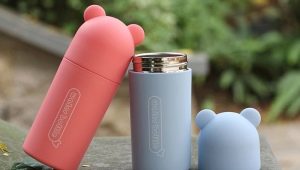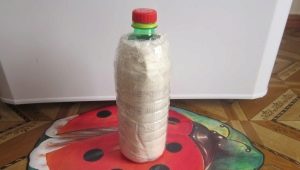Thermos corks: types and methods of manufacture
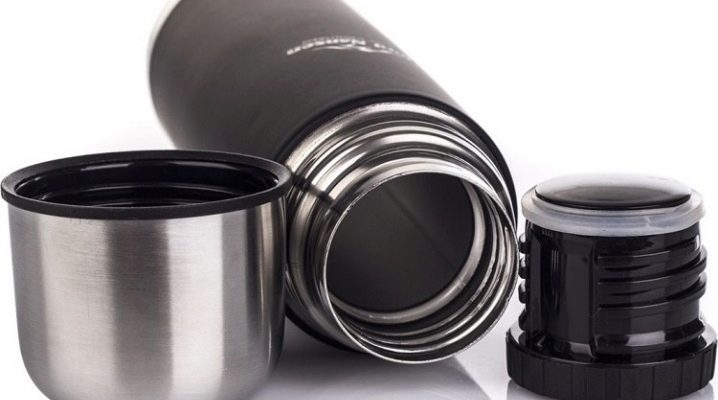
Thermoses are classified as dishes that allow you to keep the temperature of the food in it for quite a long time. They are simply necessary for travelers, indispensable for long walks, during picnics or fishing. In a thermos, you can keep hot not only tea or coffee. There are types of thermal dishes that can keep the first and second courses hot. Cold and hot dishes can be stored in thermoses for up to a day.
Such storage allows even after 8 hours to pour burning tea from a thermos, which is very convenient if it is impossible to use the kettle at the moment. With frequent use, the corks of products may lose their original appearance, they may pass water, as a result of which the thermal insulation is broken.
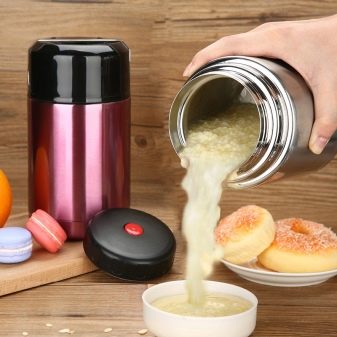

Varieties
Thermoses designed for liquids are considered the most popular and compact. The flask in such models has a narrow neck, which is why heat loss through the cork is not so intense.
Thermoses can be:
- food;
- household;
- made of stainless steel;
- with pneumatic dispensers;
- with glass flasks;
- flasks;
- vacuum models;
- thermos coffee pots;
- children's;
- for soup.
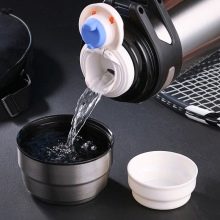
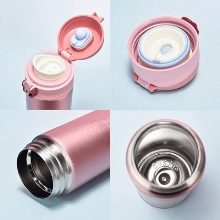
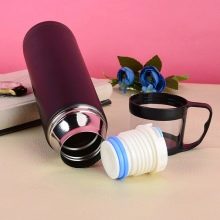
Many appreciated the convenience of the model with a valve for dispensing liquid.Containers are made from stainless steel. This allows maintain a high temperature of the water in the tank for at least 8 hours. It can be filled with both cold and hot liquid. For many, a specially built-in removable valve is very convenient, which protects against spillage when tipping over. One type of thermos is not suitable for storing first courses and drinks in it.
Containers for tea and coffee are made with a narrow neck, containers with a wide mouth are suitable for storing foodstuffs in them. There are universal models with an additional narrow neck. Cold dishes and drinks in a thermos will keep the temperature 2 or 3 times longer than hot ones.


For metal products with a glass flask, various types of stoppers can be used. So, balsa corks are popular in a fabric sheath. No less popular models with traffic jams from natural pressed crumbs or solid cork. Products with glass flasks are considered the most sought after. According to their characteristics, they will not be inferior to thermoses with a steel flask. Drinks that have bright and persistent aromas should be stored in glass containers.
Convenient screw-on lid prevents spillage. The contents will remain hot in such a vessel for up to 24 hours.
When choosing a thermos, you should look at what material the cork is made of. Some choose models made from the so-called balsa (this is a light wood species), most buyers prefer models with cork.
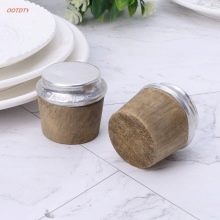
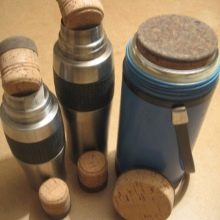
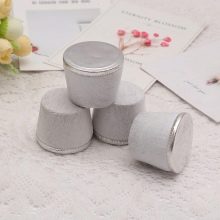
Plug types:
- from balsa (light wood species) for a glass flask, the product is covered with a fabric shell;
- from natural cork;
- cork for a thermos with a thread for a strainer;
- screw plug with or without button;
- many models have a double button;
- plug-button with a lever.
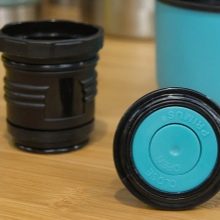
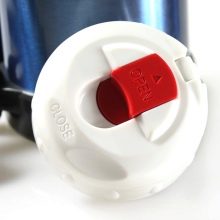
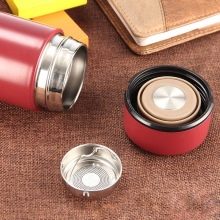
Thermos-sleeve is also a popular model with buyers. On the website of the online store, you can purchase a set of plugs, consisting of two pieces measuring 4.8 by 4.8 cm. The plug is designed for a thermos volume of 350 and 500 ml. The thermos cap with a button increases the convenience of using the thermos. They are made of plastic, the model has a button and a silicone seal. The cork is screwed on with a thread. Opens with a button. Models with a button are designed for thermoses with a narrow neck. Opens very simply thanks to the button located in the center.
The thread is tight. The silicone seal fits snugly against the wall of the product, thereby maintaining the temperature of the drink in the container for a long time. If liquid leaks from under the cover, you should find out the cause of the water passage. On screw plug models, replacing a worn part can be difficult. To find out the cause, you need to clean the cover and wash it thoroughly. Usually this is enough for the plug to stop letting water through. If this does not happen, the plastic stopper should be replaced.
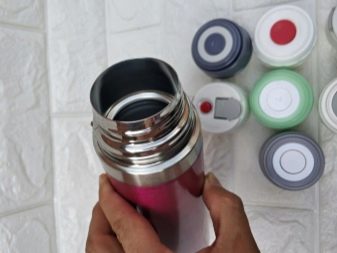

How to restore an old cork?
When buying a product, it is better to make sure that it is authentic. Products from China often do not differ in appearance from the original products, but after the first days of use they may leak. The Chinese consumer goods, which flood the country's markets, are characterized by a low price, but at the same time, the low quality of the goods. This also applies to thermocouples. When buying a product, it is better to give preference to models of well-known proven brands.In this case, there is a high probability that the product will not fail soon. In addition, many manufacturers give a lifetime warranty on their product, and in the event of a breakdown of the original product, they will be able to replace the part. Well-known brand thermoses will keep you warm for over 30 hours.
If you use a thermos frequently, then over time, the cork may stop retaining heat, sag and leak liquid. In the event that this happens, you should not throw away the container, it is better to try to replace the failed part. Owners of thermoses with cork stoppers know that such locking devices begin to deform, crumble and lose their properties over time. Crumbs can get inside the container, which negatively affects the appearance of drinks and their taste.
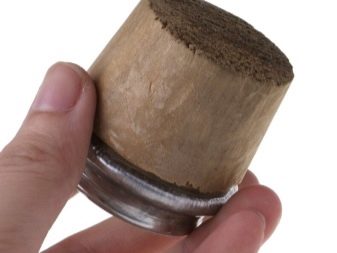
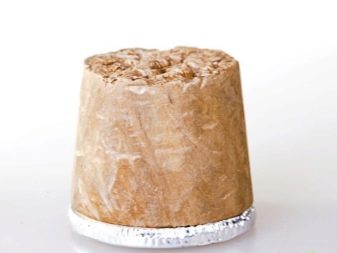
You can try to restore such a device yourself.
- Drill a hole in the cork product, put a cone cut out of wood into it. Wooden sticks for sushi or something similar are suitable as a cone. Thanks to such actions, it is possible to seal the cork, returning it to its original shape. Before driving the cone into the product, it is recommended to steam the plug well.
- In order not to drill a hole in the product, you can simply steam out the cork. In this case, place the element in boiling water and then clamp it in a vise. Wait until the locking device has completely cooled down. Only after cooling down, you can pull out the cork, and use the device further.
- If the old cork has dried out, you can wrap it several times with a regular medical plaster. Wrap a little food foil over the patch, and insert the part in the neck.You need to scroll it a little so that the plug goes deeper, thereby ensuring a complete seal.
In the event that this procedure did not bring the desired result, the cork should be replaced by making it yourself from other materials.
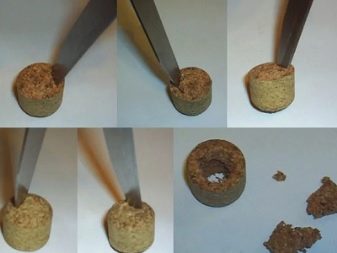
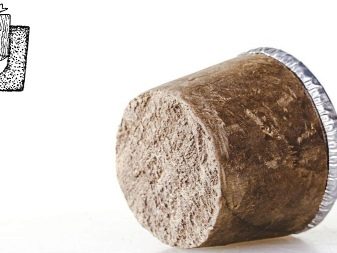
How to do it yourself?
If the cork stopper starts to break down, you can simply wrap it in foil. Such a simple manipulation will not allow particles to get inside the flask. The plug itself can last for some more time. Since the cork tree does not grow with us at every step, improvised materials can be used to replace it. The easiest way to use for these purposes ordinary foam. To do this, you need to take a piece of foam, then determine the size necessary for the manufacture of the part, and cut out the element, taking into account its diameter and size.
Styrofoam is a very light material, it does not deform. When filling a thermos with boiling water, it is possible to push out the foam element. To prevent the cork from being pushed out, you need to pierce its middle with a large needle.
To prevent the foam from crumbling, the foam product is wrapped with cling film.
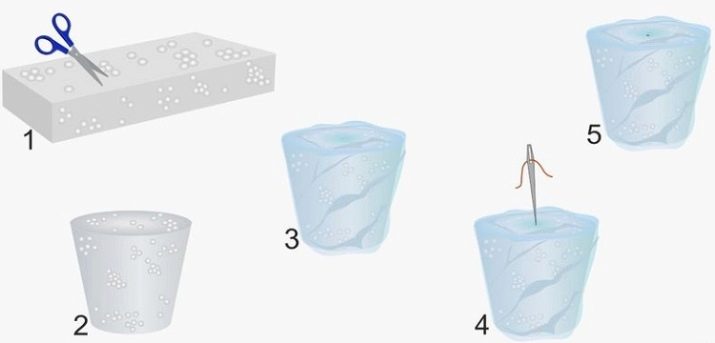
What can be made from?
You can make an element for a plug at home. For this, a regular champagne cork will do. You need to take it and wrap it with a thick film of polyethylene. Inside should be filled with food sealant. A home-made product is inserted into the neck until the sealant has had time to harden. Keep the cork in this form for at least a day. After 20-25 hours, the film is removed. The cork is now ready to use. When applying sealant, remember that it has an unpleasant smell, so it is better to apply it on the balcony or in the stairwell, as well as in the yard.
In addition to champagne corks, you can use wine corks. To build an element, you need to take several wine plugs, connect them in the form of a flower, cutting the edges, and gluing them together, for example, with nail polish.
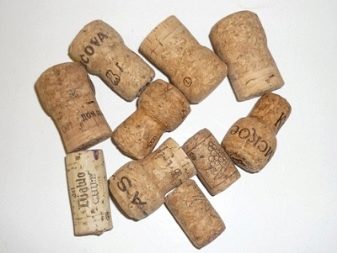
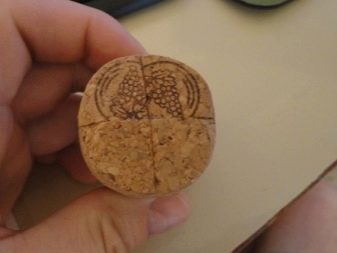
This method was recognized as more laborious, therefore it is more expedient to use the previous version for these purposes.
How to make a cork for a thermos, see the following video.























